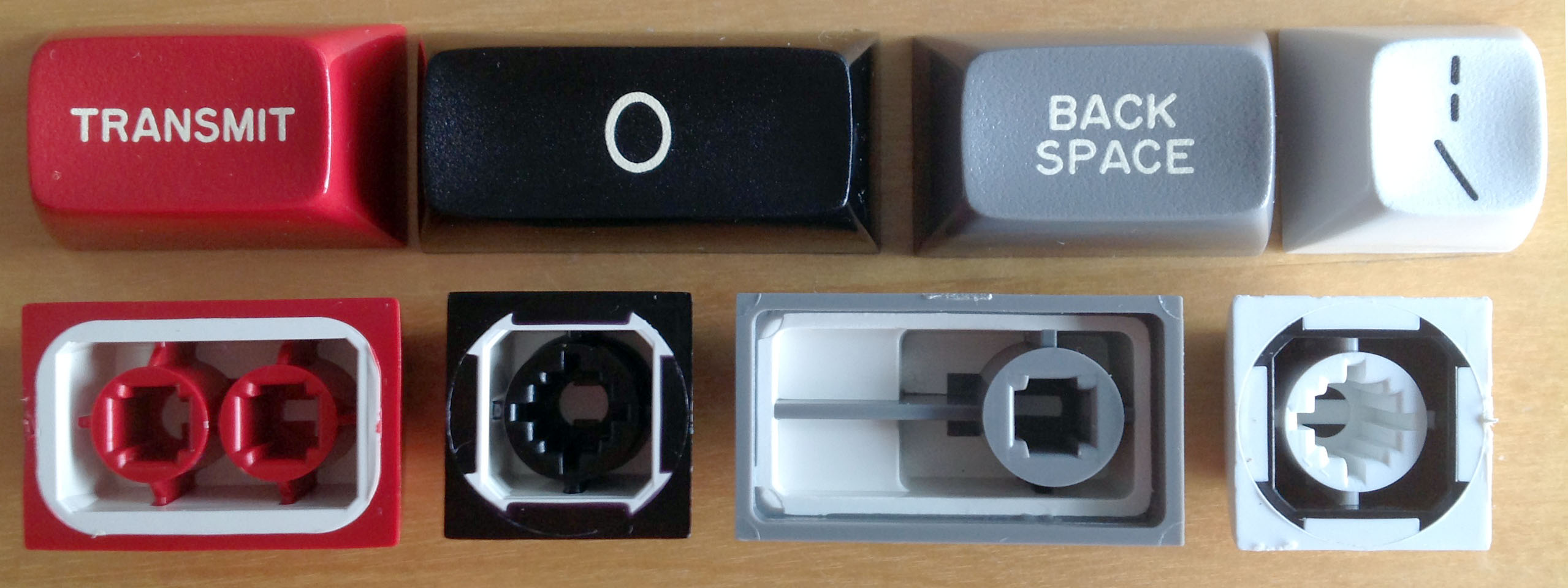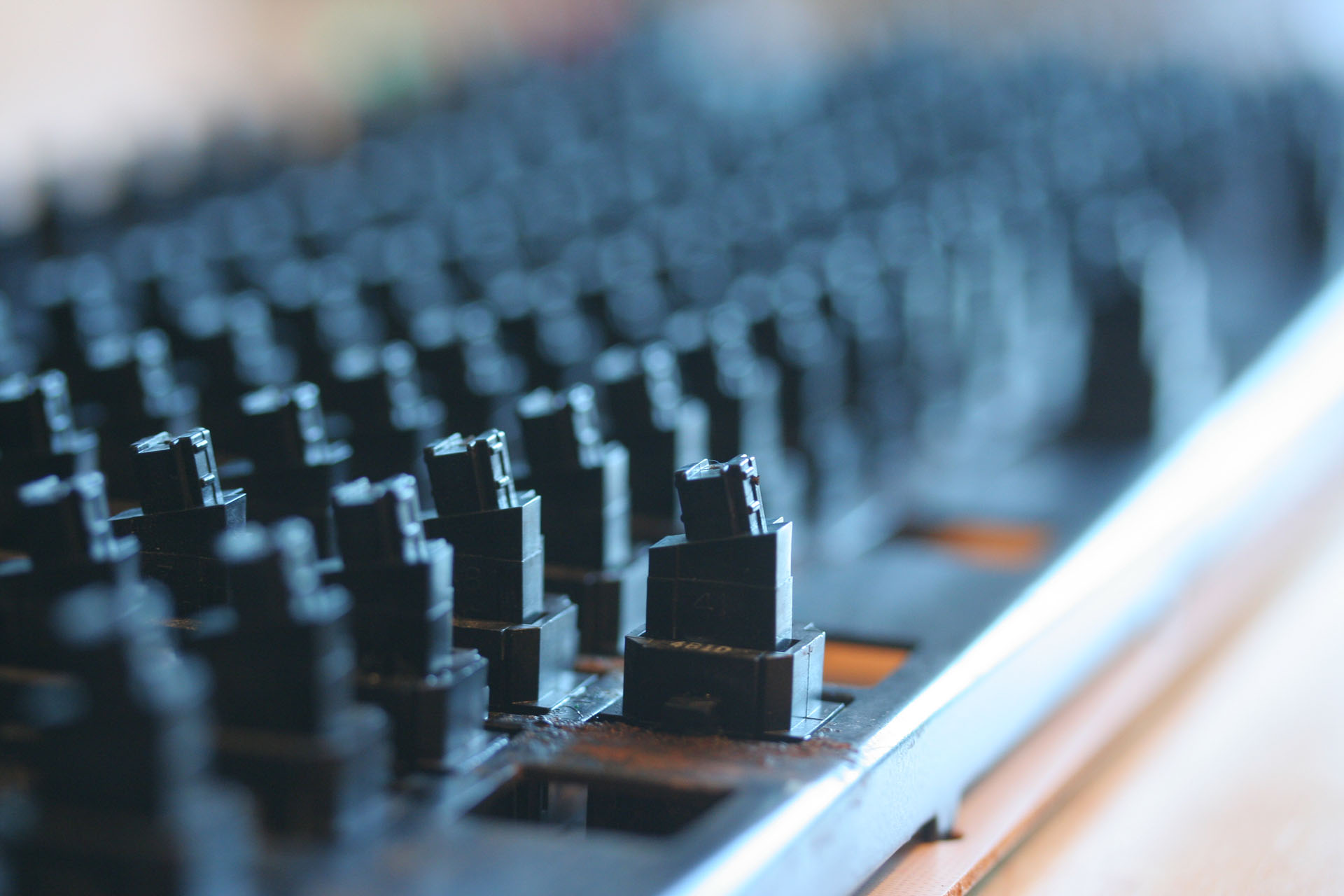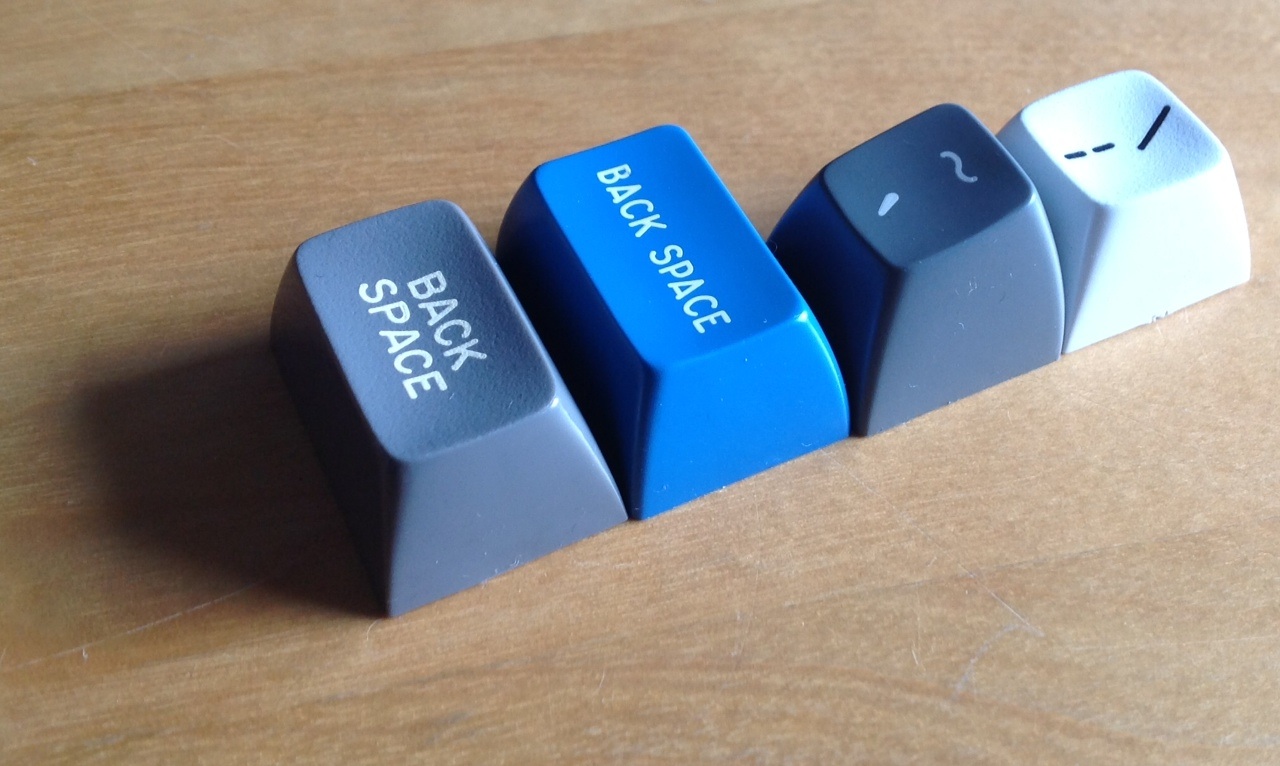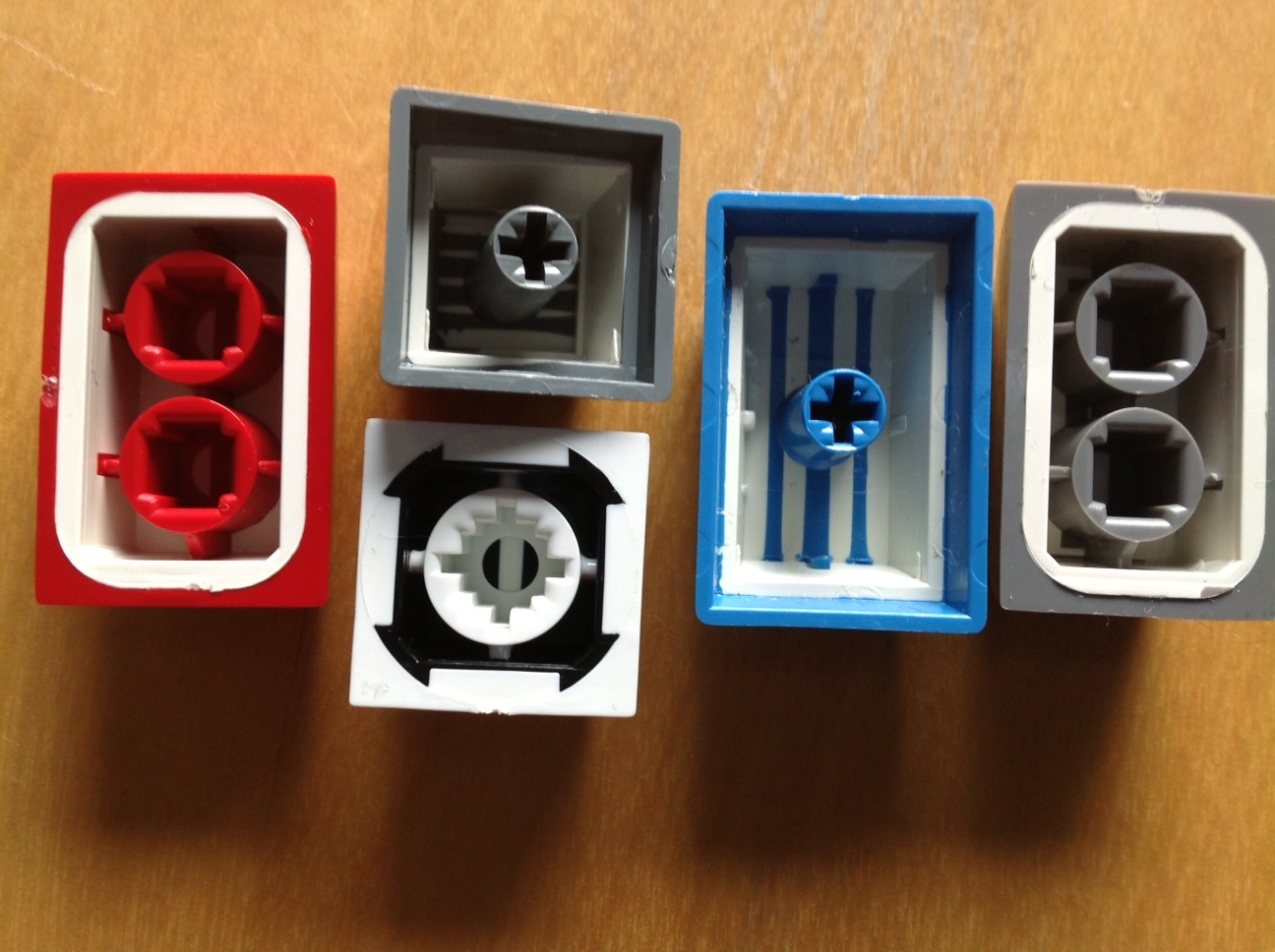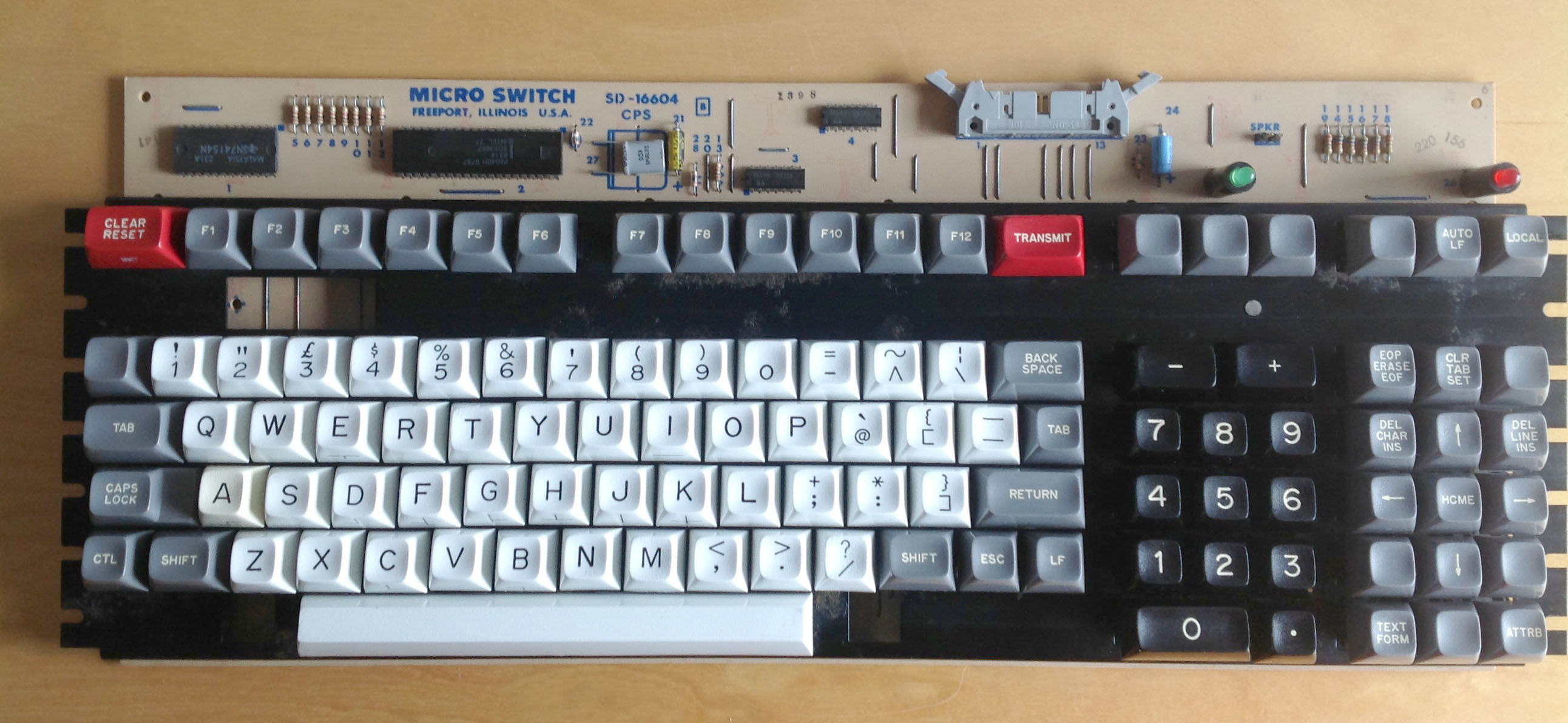
The similarity with the Space Cadet Keyboard of legend is quite striking:

The caps are freaking huge: Seen in their natural environment: Their tall spherical tops retain the original texture, while the sides are silky smooth: I do quite like the colour scheme. Round 5: tall spherical "Honeywell set", anyone? The mounts are telltale Honeywell Hall Effect: Double shot, naturally. In fact the inner shot on these is easily thicker than the whole body of any of my regular keycaps!
The space bar has a plastic stab. This is a key tell that this is a later model Honeywell keyboard. Also note the geometric symbols on the front of some of the keys: While I love this keyboard, I'm not a fan of its one and only plastic stabiliser. I reassembled the board without this stab, and the space bar works much the same but feels much better. Perhaps it needs lubed. There's not a trace of the stuff anywhere to be seen.
Right, now my fellow caps fetishists are happy, on to the switches. They are this keyboard's super linear stars: Micro, USA. Accept no substitute. These are easily the smoothest switches I've ever encountered. No mechanical switching mechanism: these are solid state. That's the magic of Hall Effect. The keyboard uses two kinds of Honeywell switch. Straight 4B3E over all its keys but three. 4B3E means angled black stems, normal (78 cn) weight, three pins; the very same model as used in the Space Cadet. The exceptions are Caps Lock and the two extreme top right keys: these are latching, and use 5B3A. There are also a handful of dummy switches with felt tops, which work like Cherry stabilisers, with code 6B1D.
Here's some switch porn for a change: I do actually have the entire keyboard. I've been showing off the insides so far because they're the good part. The outside is the mystery. Here it is: Who Dunnit ?? So true. There's not a mention of Honeywell, or anyone, anywhere on the outside. I took to nagging the forum's resident experts to see if they could drop be a lead. Dorkvader nailed it. Here are two Honeywells that are very much indeed like mine:
Honeywell BO1810

The one I'm looking after's chassis looks just like this, only dirtier!
Honeywell BTRM 121C-001
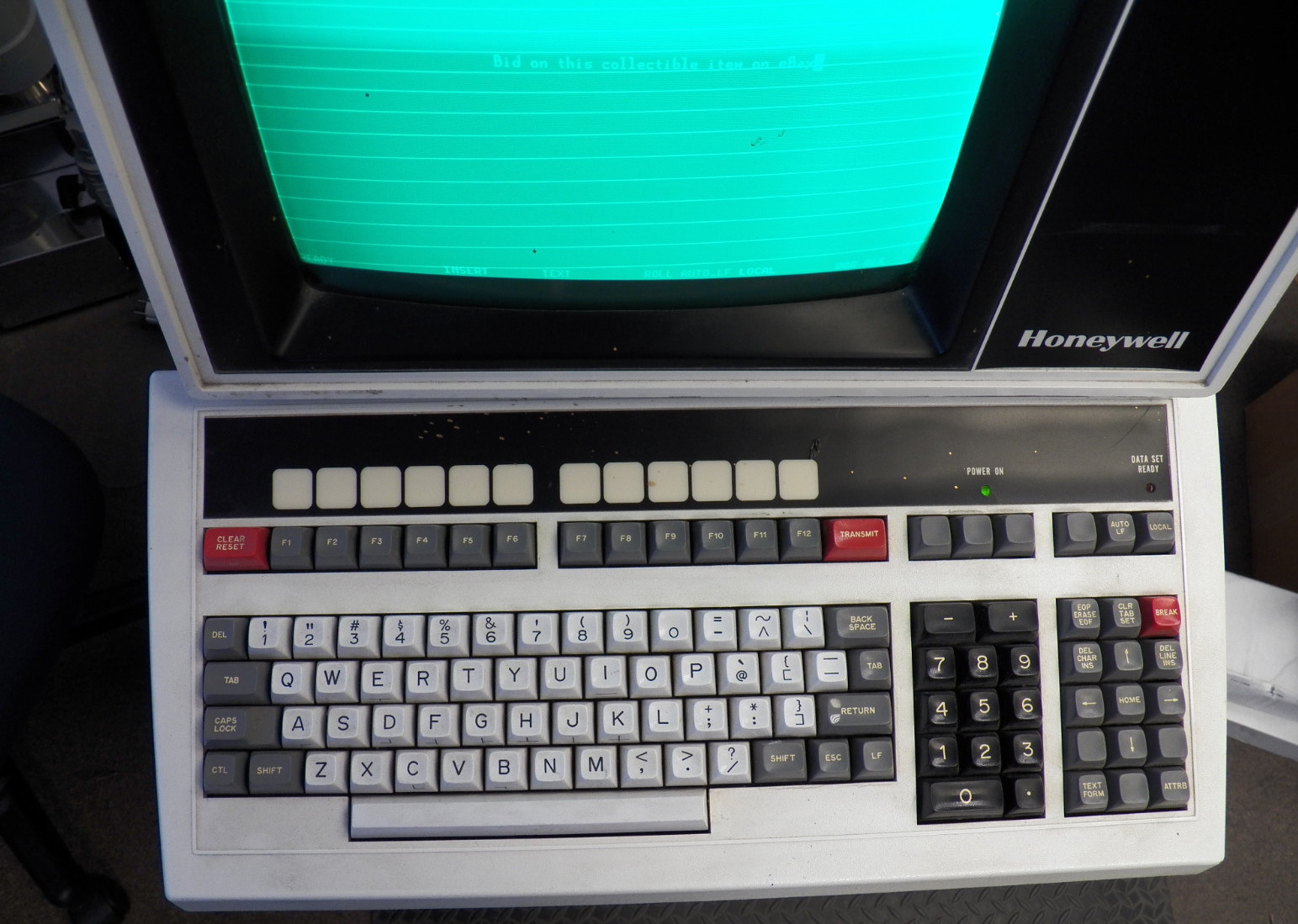
(The eBay seller kibutzblackbear gave me permission to use his pictures with credit. If you fancy this yourself he has one, precisely.)
So there you have it: a Honeywell Hall Effect keyboard whose name I don't know. But what it contains within is quite the linear wonder. Like they say: beauty is about what's on the inside!
